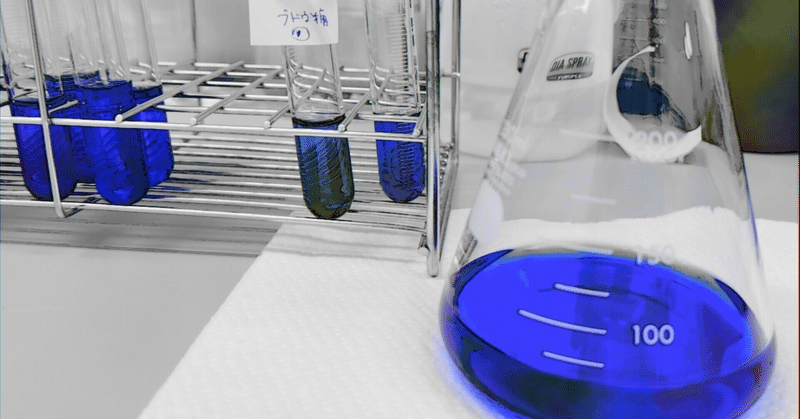
英語教育・英語学習に関する独り言39 ー 模擬TOEFL問題作成について15
会社に提出しなければならない模擬TOEFL iBT作りも一段落したと思ったら、今度は「模擬IELTSを作れ」とのお達しが。それよりも先に模擬TOEFLを正式にリリースする準備に入ってほしいのだが・・・
まあ、ええか。TOEFLは趣味で続けていこう。ということで、今度は映画『 キュリー夫人 天才科学者の愛と情熱 』を観た時から題材に取り上げたいと考えていた Marie Curie で模擬TOEFL iBT のリスニング問題を作成してみた。Have fun!
Question 01
According to the lecture, in what field did Marie Curie receive her first Nobel Prize?
A. Chemistry
B. Physics
C. Medicine
D. Mathematics
Question 02
How is Marie Curie different from other two-time Nobel Prize winners?
A. She is the first researcher to win Nobel Prizes in two consecutive years.
B. She is the last scholar to win a Nobel Prize with her spouse.
C. She is the only female scientist to win any Nobel Prize.
D. She is the only person to win Nobel Prizes in two different fields of science.
Question 03
What made it difficult for Curie to succeed? Choose two answers.
A. Sexism
B. Racism
C. Academic harassment
D. Her biases
Question 04
What does the professor say about the reason why Curie declined Fuller’s offer of assistance?
A. Fuller was not so much a scientist as an artist.
B. Curie had lost interest in collaborative research by that time.
C. Their camaraderie was fictional.
D. The true reason is speculative.
Question 05
What can be inferred from the contributions Curie made at a later stage of her career?
A. The impact brought about by her academic work was limited.
B. Her findings were disregarded by the scientific community.
C. She was interested in medical applications of her research.
D. The world used to owe a lot to it, but not today.
オーディオ・スクリプト
Listen to part of a lecture in a history of science class
Professor: This term, we’ve been discussing the lives and achievements of several female scientists, such as Émilie du Châtelet and Maria Mitchell. Today, we're going to explore the remarkable life and pioneering scientific achievements of Marie Curie. Curie was a Polish-born, naturalized French physicist and chemist who made groundbreaking contributions to the study of radioactivity.
Curie was born in 1867 in Warsaw, Poland, the youngest of five children. Despite facing personal tragedies early in life, with the loss of both her mother and father, Curie excelled academically. She attended a prestigious high school for girls, where she stood out in mathematics and physics. In 1891, Curie moved to Paris to study at the Sorbonne University, where she would ultimately earn doctoral degrees in both physics and mathematics.
It was at the Sorbonne that Curie met her future husband, Pierre Curie, a fellow physicist. Together, the Curies conducted pioneering research on radioactivity. Their collaborative work led to the discovery of two new elements - polonium and radium. Their work on isolating radium from uranium ore was recognized with the 1903 Nobel Prize in Physics, which they shared. This was her first Nobel Prize.
Curie's achievements are all the more remarkable, given the discrimination she had faced. She was forced to struggle due to two things: her gender and her Jewish heritage. When she was first nominated for the Nobel Prize in 1903, one committee member objected. He went so far as to claim that she was not a real scientist because of her gender and family background. Curie was also forced to encounter challenges securing a job at the University of Paris due to these same biases. Antisemitism was so rampant in Europe at that time.
Despite these adversities, Curie persevered and continued her research. In 1911, she was awarded a second Nobel Prize, this time in Chemistry, for her work on isolating radium. She was - and still is - the only person to win Nobel Prizes in two different scientific fields. John Bardeen won a Nobel Prize in Physics twice. And Frederick Sanger won a Nobel Prize in Chemistry twice. Some of you might remember Linus Pauling as a two-time Nobel Prize winner who won a Nobel Prize in Chemistry and a Nobel Peace Prize. However, Marie Curie is the first and the last scientist to win Nobel Prizes in two different scientific fields.
Curie's legacy extends beyond her scientific achievements. She maintained a close friendship with the American dancer Loie Fuller. Their camaraderie lasted long. Fuller even offered assistance with Curie’s experiment, which she declined. Why? Well, it is believed that Curie feared that she, Fuller, would be exposed to radiation, but you can’t speculate beyond that. However, there is no doubt that Fuller was an inspiration to Curie’s scientific imagination and ambition. Throughout her life, Curie continued to conduct research on radioactivity, founding the Radium Institute in Paris and contributing to advancements in cancer treatment.
Tragically, Curie's work on radioactivity ultimately led to her premature death. She passed at the age of 66 from aplastic anemia, likely caused by her extensive exposure to radiation over the years. But her legacy as a trailblazer for women in science, and her fundamental discoveries about the nature of matter and energy, continue to shape our world today.
From X-rays to nuclear power, Curie's work has had a profound and lasting impact. We must ensure that we honor her memory by continuing to harness the benefits of her epoch-making research, while also learning from the risks she faced, to ensure the safe and responsible use of radioactive materials. Curie's life and work stand as a testament to the power of scientific brilliance, perseverance, and the importance of expanding opportunities for women in STEM fields.
正答
Question 01 B
Question 02 D
Question 03 A, B
Question 04 D
Question 05 C
この記事が気に入ったらサポートをしてみませんか?
